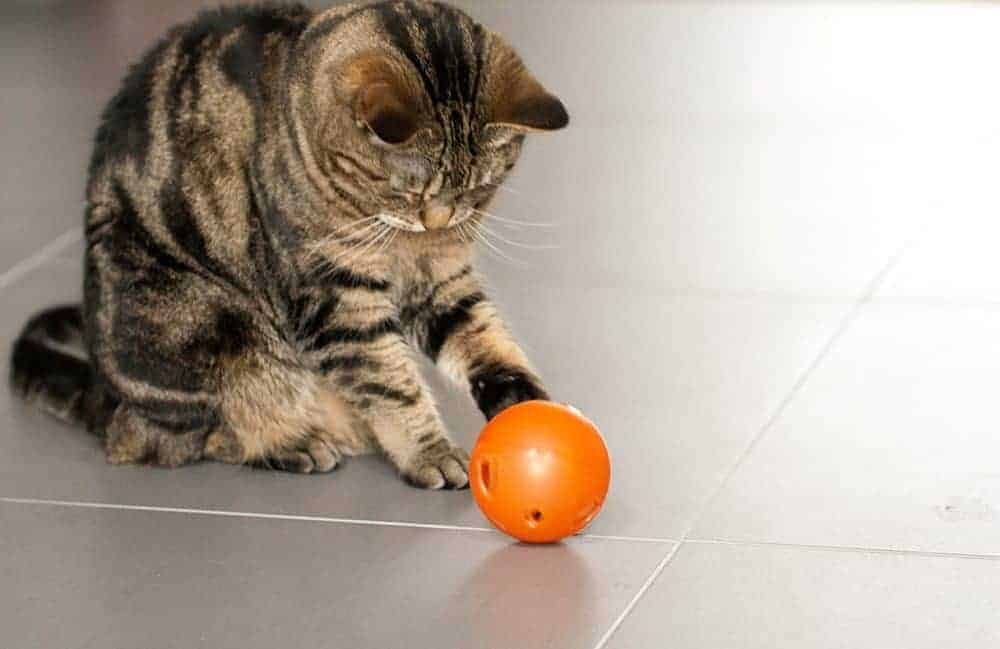
As any cat owner will testify, our fussed-over felines are very clever creatures who know exactly how to get their human to do what they want. Whether that’s opening a door (not even a backward glance – the only thank you is twitch of a tail), getting our attention (if I sit on your laptop you’ll simply have to look at me) to serving up dinner on demand (if I meow for long enough I know my human will give in). And while most owners are only too happy to do their cat’s bidding, there is one area where we should not make life quite so easy for our feline companions – feeding time.
In the wild, cats have to work for their food, which exercises their bodies and stimulates their minds. And, according to the world’s leading feline experts, providing domestic cats with the opportunity to put some effort into getting their paws on the edible prize, could have a big effect on their health and wellbeing.
A BEHAVIOURAL NEED
In The New York Times, Dr Carlo Siracusa of the University of Pennsylvania School of Veterinary Medicine explains it like this: “In their natural environment, cats eat about 12 times a day, feasting on small prey like mice and birds that are appropriate for their stomachs, which are about the size of a table tennis ball. They also toss their prey around in a form of play that is essential to their wellbeing. The behaviour pattern is written in the genes of the animal, which means that this is a behavioural need.”
When you consider it from Dr Siracusa’s perspective, this means that, by dutifully serving up our cats a bowlful of food, we’re actually denying them the opportunity to meet a basic behavioural need.
It’s time for a feeding time re-think.
DID YOU KNOW?
Puzzles that release food when an animal interacts with them were originally developed to provide enrichment for captive zoo animals
Studies suggest that by enabling cats to exhibit their in-built behavioural needs around food, we can also help tackle obesity and behaviour issues. Recent research, published in the Journal of Feline Medicine and Surgery and reported on by Science Daily, adds weight to the argument.
FROM FAT LOSS TO FEAR REDUCTION
Over 30 case studies were collated by a group of veterinarians and cat behaviour consultants in the USA, where food puzzles were introduced to aid with a specific health or behavioural concern. These included an obese eight-year-old male Domestic Shorthair who lost 20% of his bodyweight within 12 months of puzzle implementation; a three-year-old British Shorthair male cat, whose impulsive and frustration-based aggression towards his owner instantly improved and resolved completely within six months; and a two-year-old Domestic Shorthair whose fear of people (his owners included) significantly improved following the addition of food puzzles, to the point that he would come when called and was relaxed enough to enjoy cuddles.
So, how can you make feeding time more interactive, challenging and fun for your cat? All manner of cat food puzzles are available to buy – renowned cat behaviourist Anita Kelsey reviews five of the best – or you can make your own from everyday items such as shoe boxes, yoghurt pots and plastic bottles. You could end up having as much fun making your own food puzzle creations as your cat will have playing with them!
It’s not just HOW your cat eats, it’s WHAT your cat eats...
Our unique recipes contain elevated levels of protein to support obligate carnivores, taurine for a healthy heart and essential fatty acids for a healthy skin and shiny coat, along with natural antioxidants to help support your cat’s immune system and natural prebiotics for a healthy gut. Our range is designed to meet the specific nutritional needs of your cat throughout their life – from kitten, to adult and mature. Find out more about Burgess cat food here
Sources: nytimes.com, sciencedaily.com, icatcare.org.uk,














